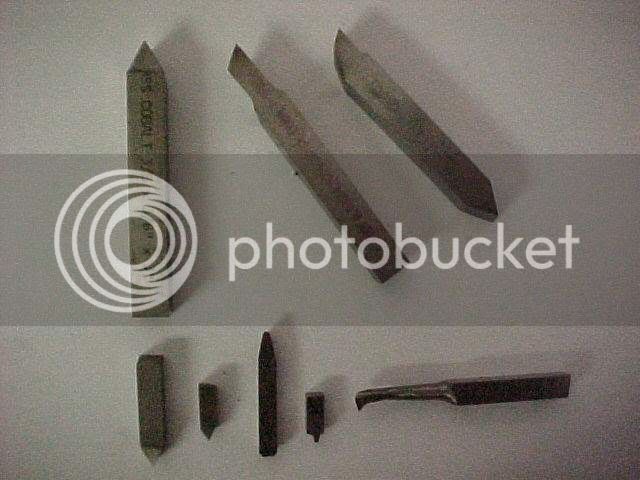Runner
Well-Known Member
- Joined
- Feb 10, 2011
- Messages
- 124
- Reaction score
- 17
Hi all,
I attempted to cut a 7/16" ACME LH internal thread. However, I had limited success. The success of such an operation is predicated on the design and construction of the internal thread cutting tool, particularly getting the profile of the cutting bit correct. I only have a bench grinder, so it was necessary to produce the cutting bit first, from a 1/4" square HSS blank. Having cut the thread profile I reduce the square section from a 1/4" to a size that just fitted in a square section hole in the boring bar. The boring bar diameter was 0.210" and the length 1.5" from the tool bit to tool's shoulder. I jammed the bit in from the backside and ground a waist on the remainder of the blank, snapped it off and then ground the backside of the bit flush with the boring bar. To hold the bit securely in the bar I used a screw, that I tightened as securely as possible. I started to cut the thread and for the first few passes everything seemed fine. However, the screw system failed and the cutting bit came out of the back of the boring bar. After several attempts at improving the securing system I resorted to silver soldering the bit in the boring bar. This secured it, well and truly. However after the silver soldering operation the tool didn't seem to be cutting at all well. I assume that the around 650 deg C temp required to silver solder did not affect the material properties of the HSS cutting bit. However the mild steel boring bar began bending and was unable to hold the bit hard enough for cutting to occur. Obviously, the high temperature annealed the mild steel?
I shall remake the internal thread cutting tool, but what changes do I have to make to overcome this problem, bearing in mind that silver soldering is the in my opinion the only viable securing option?
Thanks in advance,
Brian
I attempted to cut a 7/16" ACME LH internal thread. However, I had limited success. The success of such an operation is predicated on the design and construction of the internal thread cutting tool, particularly getting the profile of the cutting bit correct. I only have a bench grinder, so it was necessary to produce the cutting bit first, from a 1/4" square HSS blank. Having cut the thread profile I reduce the square section from a 1/4" to a size that just fitted in a square section hole in the boring bar. The boring bar diameter was 0.210" and the length 1.5" from the tool bit to tool's shoulder. I jammed the bit in from the backside and ground a waist on the remainder of the blank, snapped it off and then ground the backside of the bit flush with the boring bar. To hold the bit securely in the bar I used a screw, that I tightened as securely as possible. I started to cut the thread and for the first few passes everything seemed fine. However, the screw system failed and the cutting bit came out of the back of the boring bar. After several attempts at improving the securing system I resorted to silver soldering the bit in the boring bar. This secured it, well and truly. However after the silver soldering operation the tool didn't seem to be cutting at all well. I assume that the around 650 deg C temp required to silver solder did not affect the material properties of the HSS cutting bit. However the mild steel boring bar began bending and was unable to hold the bit hard enough for cutting to occur. Obviously, the high temperature annealed the mild steel?
I shall remake the internal thread cutting tool, but what changes do I have to make to overcome this problem, bearing in mind that silver soldering is the in my opinion the only viable securing option?
Thanks in advance,
Brian








